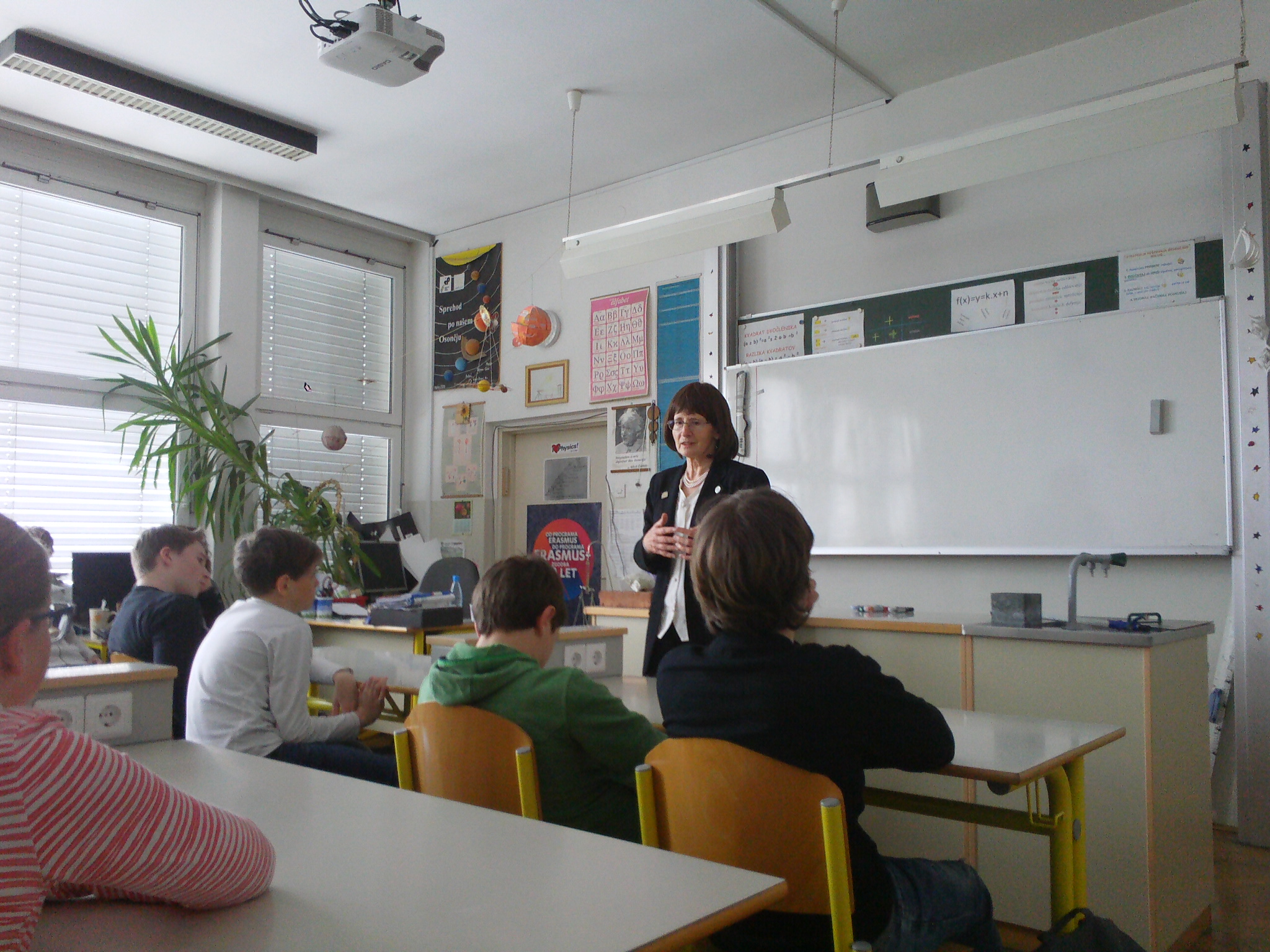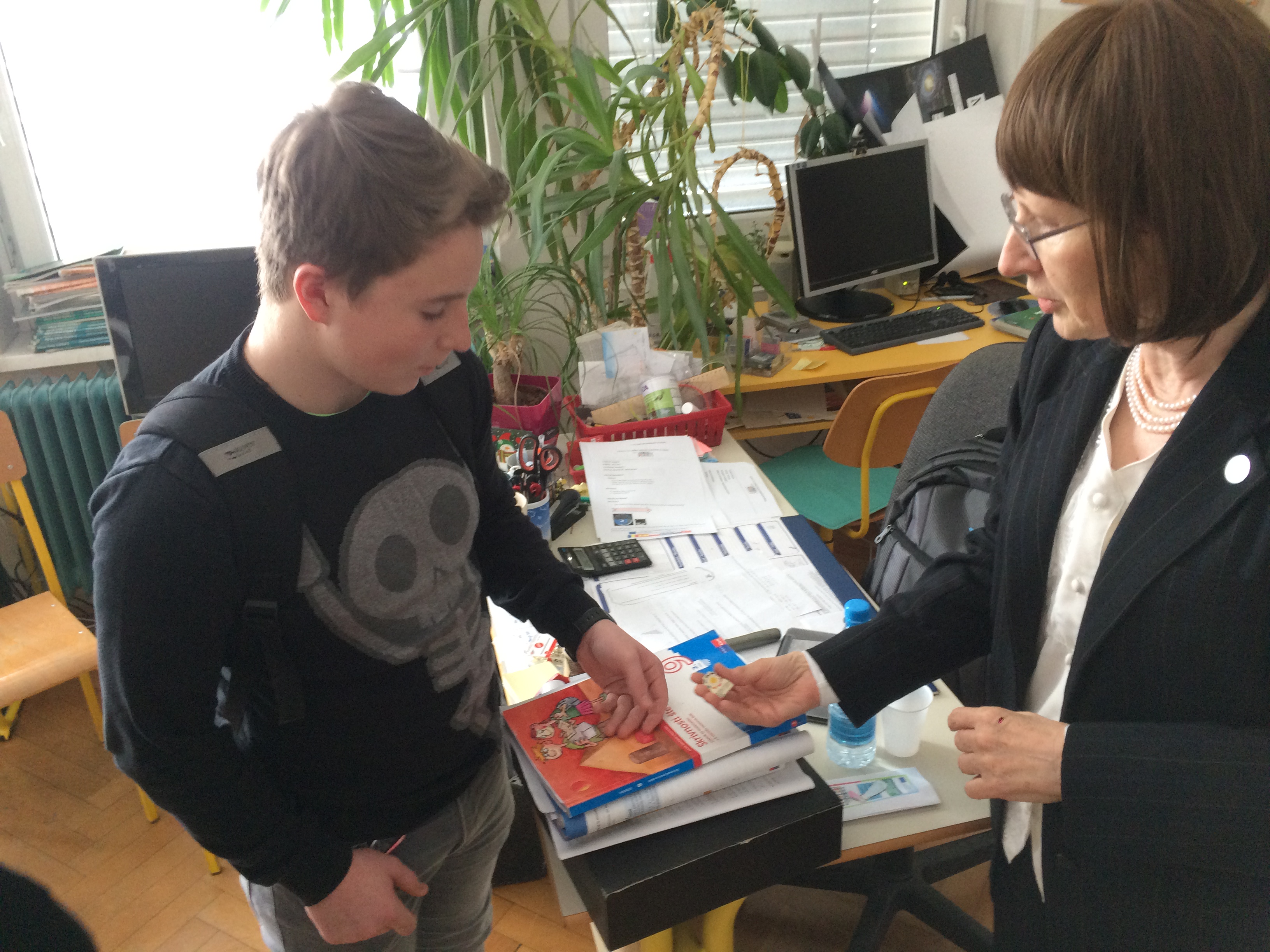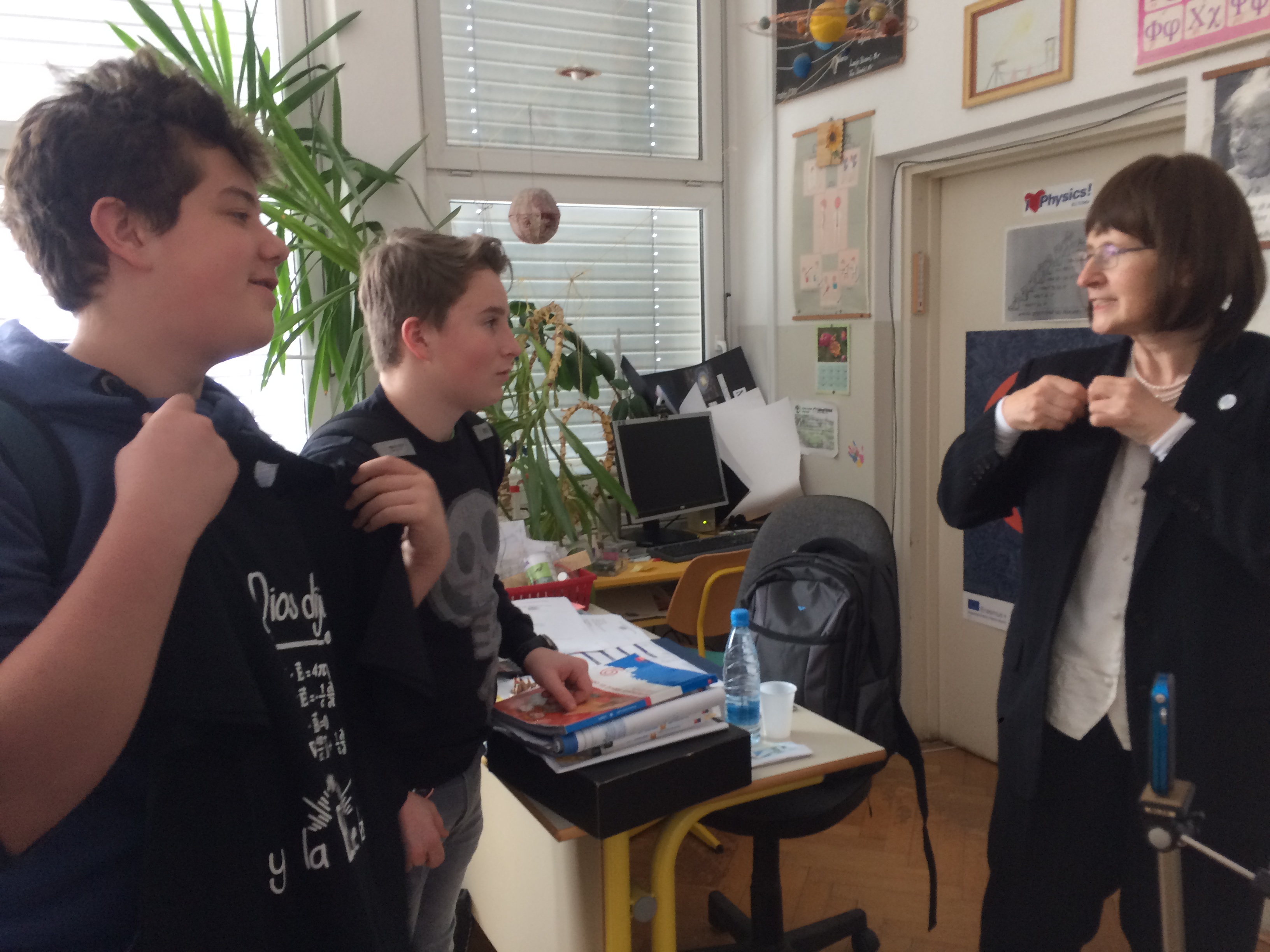How far is the nearest Earth like planet?
How scientists findout witch elements (e.g. oxigen, water) are present on exoplanets?
How many exoplanets did you discoverd, when was youre first one?
Her group discovered about 1000 exoplanets.
Her group was in univercity in USA and in exploration was involved about 6000 Ph.D. Now she is working with a group of Mexican siencists mainly on optical instruments.
How were other planets belonging to other solar systems found? Why?
She is working on exoplanets for about 20 years. And she said " We are looking into the space and see if there is any irregularity on neighboring stars becouse we can observe only them."
Why were more numbers of large exoplanets discovered compared to those similar in size to Earth?
It is simplier to find biger irregularity then smaller.
Is it possible to find water on the exoplanets?
We don't now any planet with water yet, but she think we aren't only planet with water in space.
Are there exoplanets like our Planet?
She is sure becouse we aren't anything special so she think there are many other living creatures in the space.
what is type of camera used for this type of mission?
(we didnt ask her)
Why did you study in optical ?
Because she was intrested in physics.
How long would it take to colonize another planet?
Probably in the future, when we will be on some kind of limit for our survival.
How far can man go on space?
In our colculation our space ships nowadays can travel with a speed 60,000 km/h so in our lifetime (80 years) we could travel about 42 050 mio km that means that we can go approximately 39 light hours. For instance from Earth to Pluto 4 light hours. And the nearest star is 4 light years away, so we cant go anywhere.
____________________________________________________________________________________________
One of the students got t-shirt from Ms. Strojnik from the Optical Research Center in Leon, Mexico and the other badge of the Year of light.




____________________________________________________________
FROM WIRED (sent by Ms. Strojnik)

STRAP IN, BECAUSE this week’s lineup takes us around our solar system and far out into the
universe. We’re going to linger at a young star called AS 209. A member of a young star-forming
region called Ophiuchus, this baby star currently has a proto-planetary disc around it: a ring of dust
and gas, left over from star formation, that eventually forms into planets. As each speck gathers more
and more material, it can grow into a rocky planet like our own, become enveloped in thick clouds
like Venus, or even grow into a gas giant like Jupiter or Saturn.
After observing this star using the ALMA telescopes in Chile, scientists found several gaps around
the star, spaces carved out by the newly-forming planets. In particular, a very large gap is actively
being carved out by a planet the size of Saturn. What’s strange though, is that this massive planet is
growing very far away from its star, some three times the distance between our sun and Neptune.
This discovery is challenging what scientists know about planetary formation; no doubt they’ll keep
spying on AS 209 to see what happens next.
Still not ready to leave space? Check out the full cosmic collection here.